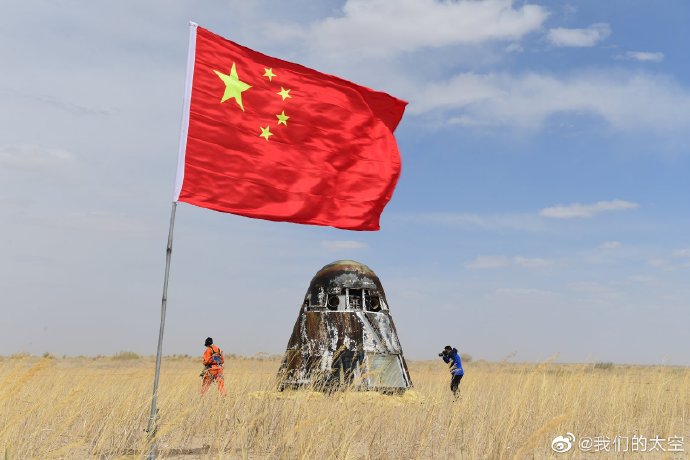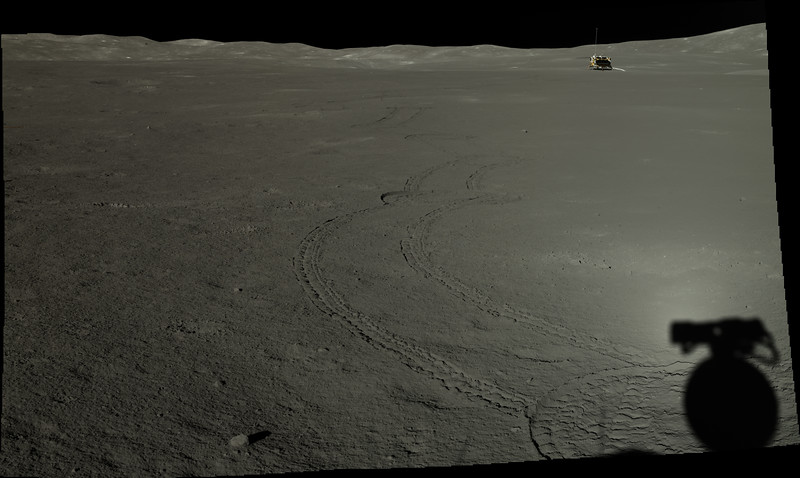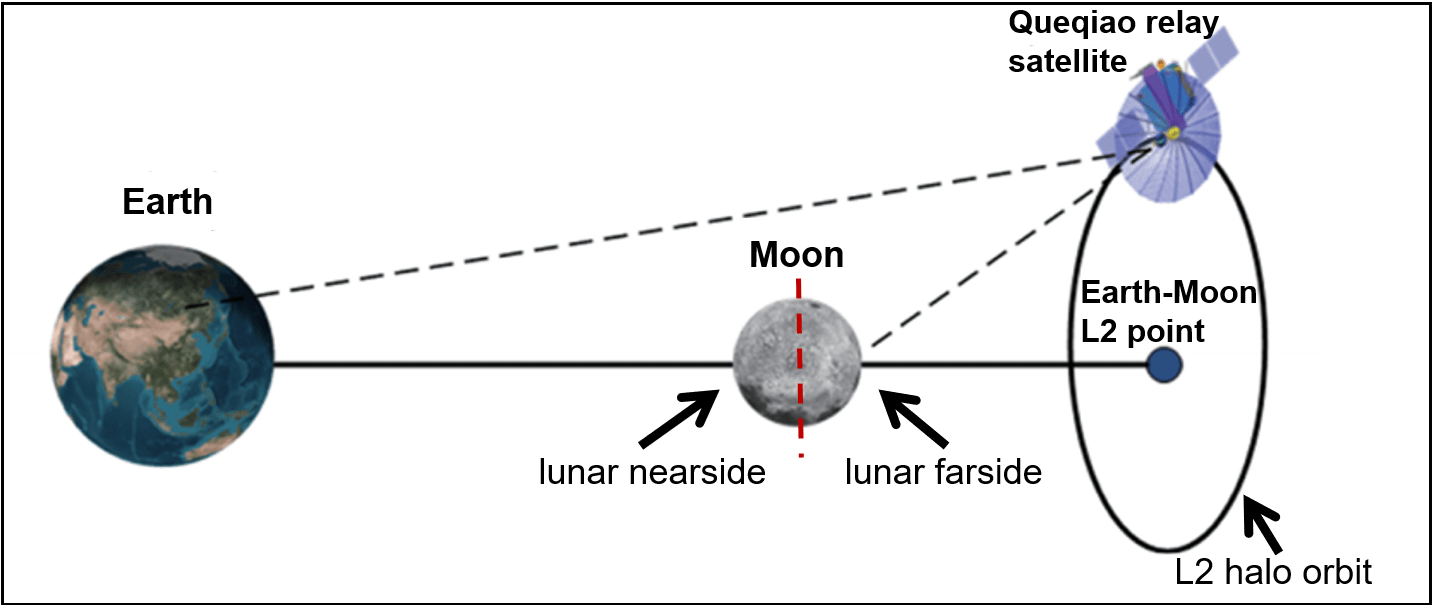In July there’s another launch window to Mars. It looks like China is ready to take advantage of it, by launching their first rover to the planet. It’s called Tianwen-1, meaning “Heavenly Questions”, or “Questions to Heaven.” The complete mission consists of a lander, an orbiter, and a rover.
Continue reading “China’s Mars Rover Launches in Late July”China’s New Crew Capsule Just Landed, and so Did Parts of their New Rocket!
China’s next-generation crewed spacecraft, which will replace the venerable Shenzou spacecraft in the coming years, recently returned to Earth after spending almost three days in space. The purpose of this mission was to test the deep space capabilities of the spacecraft that will be sending Chinese astronauts (taikonauts) to orbit, to the Moon, and beyond in the coming years.
In addition, this mission also saw China’s new Long March 5B (CZ-5B) heavy-lift rocket launch a payload to space for the first time. This rocket is the latest installment in the Long March family and will be vital to the creation of the third and largest Chinese space station. These two milestones have brought China a step closer to becoming a full-fledged superpower in space.
Continue reading “China’s New Crew Capsule Just Landed, and so Did Parts of their New Rocket!”China’s First Mars Lander is Going to be Called “Tianwen”
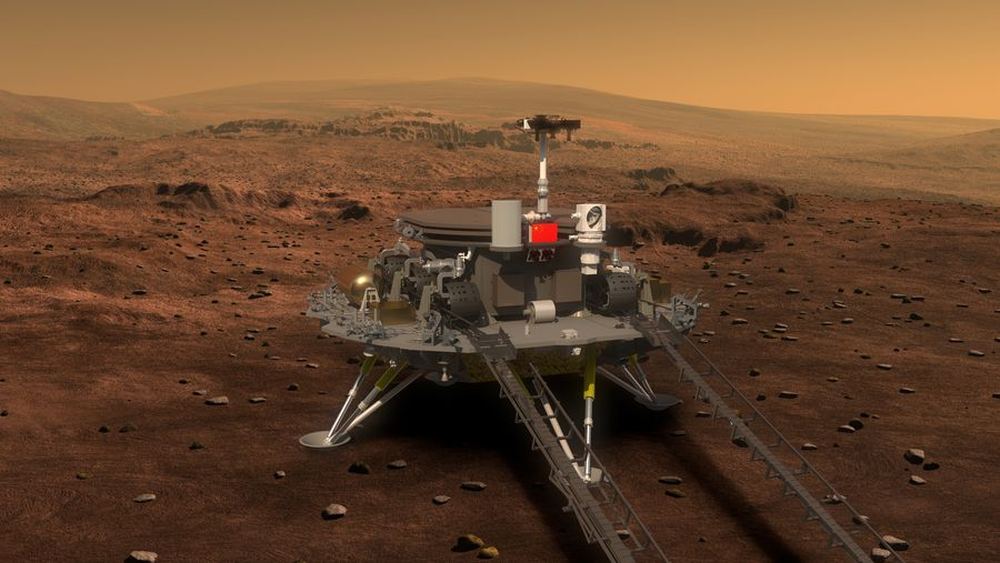
Friday April 24th was China’s “Space Day,” celebrated on the 50 year anniversary of their first satellite launch. This past Friday, China marked the occasion with the announcement of the name for their first Mars Lander: Tianwen.
According to China’s National Space Administration (CNSA), Tianwen translates to “Quest for Heavenly Truth.”
Continue reading “China’s First Mars Lander is Going to be Called “Tianwen””China Releases New Pictures From the Surface of the Moon
Ever since it made its historic landing on Jan. 3rd, 2019, the Chang’e-4 mission and its Yutu 2 rover have been busy exploring the lunar surface. Just recently, the mission passed its first year of operations and earned the distinction of being the first rover to travel a record 357.695 meters (1,173.5 ft) on the far side of the Moon. And in between all that, the mission has also provided some truly fascinating images of the lunar surface.
Thanks to a data release issued on Monday (Jan. 20th), the public can now peruse through all of the high-resolution images taken by the Chang’e-4 mission. The data, which was released by the Ground Research and Application System (GRAS) of the Chinese Lunar Exploration Project, includes images of the far side of the Moon that were taken with the lander’s terrain camera and the panoramic camera on the Yutu-2 rover.
Continue reading “China Releases New Pictures From the Surface of the Moon”Chang’e-4 Wraps Up a Year Roving on the Far Side of the Moon
China greeted the New Year with some impressive lunar milestones. For starters, last Friday (Jan. 3rd) was the first anniversary of the Chang’e-4 mission becoming the first robotic mission to make a landing on the far side of the Moon. A day prior, the Yutu-2 rover also celebrated the end of its 13th lunar day of science operations and the fact that it was the first rover to travel a record 357.695 meters (1,173.5 ft) on the far side of the Moon.
Continue reading “Chang’e-4 Wraps Up a Year Roving on the Far Side of the Moon”China’s Yutu-2 Rover has now Traveled Over 345 Meters Across the Surface of the Moon
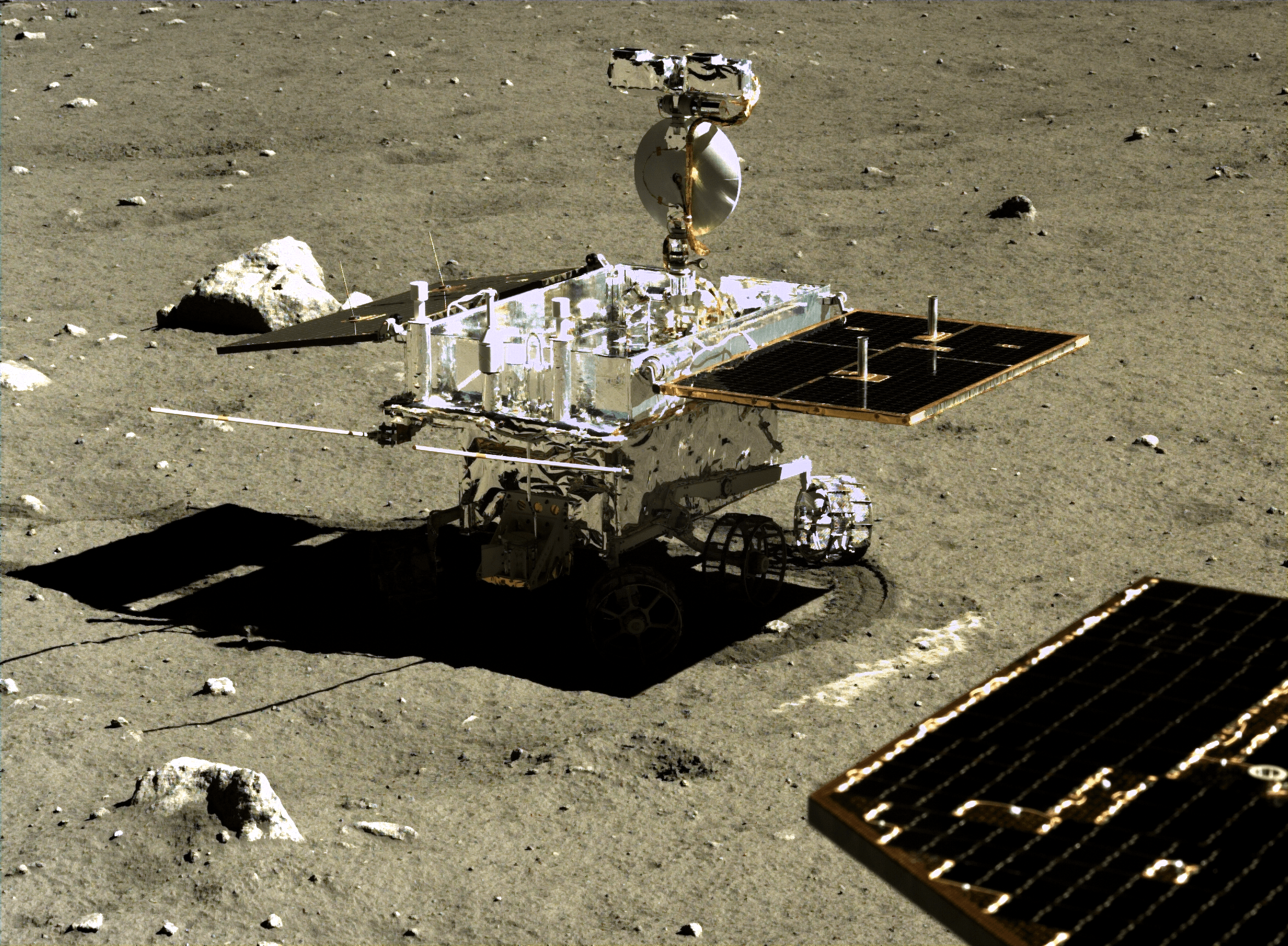
On January 3rd, 2019, China’s Chang’e-4 lander became the first mission in history to make a soft-landing on the far side of the Moon. After setting down in the Von Karman Crater in the South Pole-Aitken Basin, the rover element of the mission (Yutu 2) deployed and began exploring the lunar surface. In that time, the rover has traveled a total of 345.059 meters (377 yards) through previously unexplored territory.
Continue reading “China’s Yutu-2 Rover has now Traveled Over 345 Meters Across the Surface of the Moon”There’s Now an Operational Radio Telescope on the Far Side of the Moon
The Chang’e-4 mission, the fourth installment in the Chinese Lunar Exploration Program, has made some significant achievements since it launched in December of 2018. In January of 2019, the mission lander and its Yutu 2 (Jade Rabbit 2) rover became the first robotic explorers to achieve a soft landing on the far side of the Moon. Around the same time, it became the first mission to grow plants on the Moon (with mixed results).
In the latest development, the Netherlands-China Low Frequency Explorer (NCLE) commenced operations after a year of orbiting the Moon. This instrument was mounted on the Queqiao communications satellite and consists of three 5-meter (16.4 ft) long monopole antennas that are sensitive to radio frequencies in the 80 kHz – 80 MHz range. With this instrument now active, Chang’e-4 has now entered into the next phase of its mission.
Continue reading “There’s Now an Operational Radio Telescope on the Far Side of the Moon”China’s Lander Successfully Grew Some Cotton Plants on the Moon. Fruit Flies and Potatoes Didn’t Fare So Well

When China’s Chang’e-4 spacecraft landed on the lunar far side on January 3rd 2019, it made history. It was the first spacecraft to visit that part of the Moon, and among its payload was a 2.6 kg (5.7 lb) mini-biosphere called the Lunar Micro Ecosystem (LME).
The sealed, cylindrical biosphere is only 18 cm (7.1 in) long and 16 cm (6.3 in) in diameter. The LME carried six lifeforms, kept in mostly Earth-like conditions except for micro-gravity and lunar radiation.
Continue reading “China’s Lander Successfully Grew Some Cotton Plants on the Moon. Fruit Flies and Potatoes Didn’t Fare So Well”China’s FAST Telescope, the World’s Largest Single Radio Dish Telescope, is Now Fully Operational

After years of construction, China’s new radio telescope is in action. The telescope, called FAST (Five-hundred-meter Aperture Spherical Radio Telescope) has double the collecting power of the Arecibo Observatory in Puerto Rico, which has a 305 meter dish. Until now, Arecibo was the world’s largest radio dish of its type.
Continue reading “China’s FAST Telescope, the World’s Largest Single Radio Dish Telescope, is Now Fully Operational”China’s Tiangong 2 was Destroyed Last Week, Burning up in the Atmosphere Over the South Pacific Ocean
On Friday, July 19th, China’s Tiangong-2 (“Heavenly Palace”) space laboratory successfully entered Earth’s atmosphere under controlled conditions and burned up above the South Pacific Ocean. This marked the successful completion of all of Tiangong-2’s tasks, which constituted China’s second attempt at testing their capability to conduct research and human operations in Low Earth Orbit (LEO).
Continue reading “China’s Tiangong 2 was Destroyed Last Week, Burning up in the Atmosphere Over the South Pacific Ocean”

